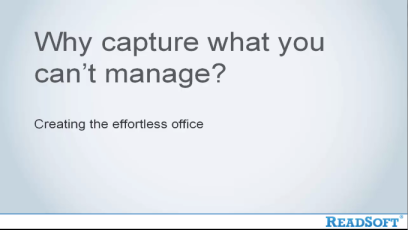After just finishing my second year of university, I can appreciate the value that real world business experience will have on my job prospects after my final year. This and my keen interest in marketing, made working in the ReadSoft marketing team an ideal way to spend my summer holidays.
Whilst working at ReadSoft I am involved in a project to create an end-to-end business model for an online invoicing solution. As part of this my main focus is on the marketing, which includes developing a microsite, social media marketing, editing promotional videos and creating direct email campaigns. Below I will explain what was involved in each of these experiences what I have learnt from each.
1) Developing a microsite
Using a CMS, I created a microsite for the ReadSoft Online solution. This involved designing images to use as linked buttons for the site. I learnt from this that branding is extremely important and developed web editing skills.
2) Social media marketing
My task was to post 2 different social media utterances a day. I was given the passwords to the ReadSoft Twitter account and to the company LinkedIn account. I used websites such as Quora and the UK Business forums which I wasn’t familiar with before. From this I learnt the importance of social media marketing, how to use it effectively and how to report on results.
3) Promotional video editing
My task was to edit an interview with a customer who currently uses ReadSoft Online so that it flows and creates a promotional video for ReadSoft Online. From this I was able to develop my video editing skills, as well as understanding ReadSoft Online from a customer’s point of view.
4) Direct email campaigns
I used a world leading email platform to create email campaigns to go out to a large database of potential customers. My campaign was designed to gather information about the prospects circumstances and the tone used made it feel as if it spoke to the potential customer personally.
I have really enjoyed my internship at ReadSoft. I feel that I have slotted into the team well and got on well with the other interns. The experience has been extremely value and will greatly assist me with my future career.













